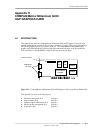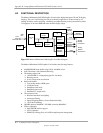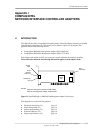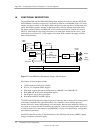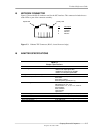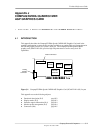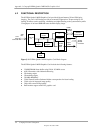
Technical Reference Guide
Compaq Personal Computers
Original - December 2000
I-3
I.2.1 AOL FUNCTION
The adapter’s Alert-On-LAN (AOL) function provides a AOL-compliant system unit with the
ability to communicate system status to a management console, even while the system is powered
down. When installed in an AOL-compliant system, the adapter receives alert messages from the
system’s I/O Controller Hub (ICH) over the PCI bus. Each alert message decoded by the adapter
results in a pre-constructed status message being transmitted over the network to a management
console.
Alert-On-LAN functionality occurs independent of software, driver, or even processor
intervention. The adapter can report following conditions:
♦ System tampering – Removal of the chassis cover
♦ BIOS failure – System fails to boot successfully
♦ OS problem – System fails to load operating system after boot
♦ Missing/faulty processor – Processor fails to fetch first instruction
♦ Thermal condition – High temperature detected in system
♦ Heartbeat – Indication of system’s presence on the network (sent approximately every 30
seconds)
NOTE: The system unit must be plugged into a live AC outlet for the AOL function to be
operative. Controlling a system unit’s power through an AC outlet strip will, when
the strip is turned off, disable AOL functionality.
The AOL implementation requirements are as follows:
1. System unit featuring the 810, 810e, 820, or 850 (or later) chipset.
2. Intel PRO/100+ Management Adapter Driver 3.1 or later (available from Compaq).
3. Client-side utility agent software (available from Compaq).
4. Management console running one of the following:
a. HP OpenView Network Node Manager 6.x.
b. Intel LANDesk Client Manager.
c. Compaq Insight Manager.
I.2.2 WAKE UP FUNCTIONS
The adapter provides two types of wake-up signaling: the PME- signal and the WOL signal.
The adapter provides PME- signal support for systems compliant with PCI ver. 2.2. The detection
of any wake event results in the adapter’s assertion of the PME- signal, which can be used by the
system unit to initiate the power-up sequence. System software is responsible for the clearing the
PME- signal.
The adapter also includes a WOL interface for systems supporting that method of wake-up. The
adapter asserts the WOL signal for 50 milliseconds upon detection of a Magic Packet. The WOL
signal is routed to the system unit (through a three-conductor cable connection) for initializing a
power-up sequence.



